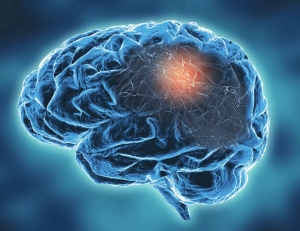Every year, thousands of people walk away from car accidents thinking they're unhurt. However, pain often appears hours or even days later. You may notice a stiff neck, an aching back, or a tingling sensation that won't go away. These signs may seem minor at first, but they can worsen quickly if left untreated.
Unmanaged pain may interfere with daily tasks and limit your mobility. It can affect your sleep, your work, and your focus. If you ignore early symptoms, they may lead to long-term damage. Waiting too long may require more aggressive treatment and a longer recovery period.
There's good news if you act fast and follow the right steps. This guide explains how to manage car accident pain safely and effectively. It gives you tools to understand symptoms, choose treatments, and protect your long-term health.
Identifying Common Types of Post-Accident Pain
Whiplash is one of the most common injuries after a car crash. It affects your neck and upper back. Symptoms include stiffness, reduced range of motion, and sharp or dull pain.
Headaches may develop soon after the accident or days later. They often signal muscle tension or head trauma. Soft tissue injuries can cause swelling, bruising, and ongoing soreness.
Back pain is another frequent issue. It may result from spinal misalignment or muscle strain. Left untreated, it can lead to long-term mobility issues and joint problems.
Some people experience neuropathic symptoms like tingling, numbness, or burning sensations. These may indicate nerve damage or pinched nerves.
Emotional pain may also occur. You might feel anxious, stressed, or have trouble sleeping. Psychological effects like post-traumatic stress can worsen physical symptoms and slow your recovery.
Understanding Why Pain May Be Delayed
Adrenaline and shock often mask pain right after a crash. Your body enters a high-alert state, which blocks pain signals. This response can delay symptoms for hours or even days.
Inflammation builds slowly after injury. Swelling may start small, then increase over time. As tissues react, pain, stiffness, and redness may appear. These signs might not show until your body begins to heal.
Some people assume they're fine if pain doesn't show up immediately. This can lead to missed injuries and delayed care. Early signs might be subtle, like minor discomfort or tightness.
Early observation is essential. Monitor your body closely in the days following the crash. Take note of new symptoms, no matter how small. Timely medical attention improves outcomes and shortens recovery time.

Seeking Immediate and Professional Medical Attention
Visiting the emergency room or urgent care right after a crash is important. A car accident doctor can check for hidden injuries. Early exams help prevent complications and start your treatment faster.
Proper documentation supports both your health and legal needs. Medical records confirm the injury happened after the accident. This can help with insurance claims and legal actions.
Don't rely on one visit alone. Follow up with your primary care provider for continued care. They can track your progress and refer you if needed.
Specialists like chiropractors can treat spinal or joint pain. Orthopedic doctors focus on bones, muscles, and soft tissues. They offer advanced care for serious injuries that don't improve with time.
Getting help from the right professionals reduces the risk of long-term damage. Early treatment can also lower your medical costs over time.
Exploring Short-Term Pain Relief Options
Over-the-counter medications can reduce pain and swelling. Ibuprofen and acetaminophen are common choices. For stronger pain, a doctor may prescribe muscle relaxers or narcotics.
Cold therapy works best within the first 48 hours. Use ice packs to reduce swelling and numb pain. After the initial period, switch to heat. Warm compresses help loosen tight muscles and improve blood flow.
Rest is important during the first few days. Avoid heavy lifting or intense movement. However, too much rest can slow healing. Light movement helps prevent stiffness and supports circulation.
Walking short distances or doing gentle stretches may help. Follow your doctor's advice to avoid injury. Balance rest with activity to support your body's recovery process.
These early steps make a difference in how well and how fast you heal.
Committing To Long-Term Pain Management Strategies
Physical therapy helps restore movement, strength, and flexibility. It targets the injured area with guided exercises. A therapist creates a plan based on your specific pain and progress.
Chiropractic care focuses on spinal alignment and joint mobility. Spinal adjustments may ease back, neck, and shoulder pain. Many people find relief through regular chiropractic sessions.
Therapeutic massage reduces muscle tension and improves blood flow. It also supports stress relief and emotional balance. Acupuncture, which uses thin needles at pressure points, may reduce chronic pain.
These treatments work best when used together. Each method supports different aspects of healing. A consistent routine builds lasting recovery and prevents new problems.
Work with licensed professionals to ensure safe and effective care. Long-term pain relief requires patience, commitment, and a plan tailored to your needs.
Conclusion
Many people ignore pain after a car accident, hoping it will pass with time. Minor aches may seem harmless at first but can signal deeper issues. Overlooking early symptoms can lead to lasting damage that's harder to treat later.
Taking action early protects your long-term health. Track your symptoms, follow up on treatment, and stay consistent with care. Build a plan that fits your body's needs and adjust it as you heal.
Consider working with a pain management specialist. These experts offer custom plans that go beyond general treatment. They combine physical, neurological, and emotional care for full recovery. Their early support can make your path to healing faster, safer, and more effective.
Sponsored Post: This article is a sponsored post.






